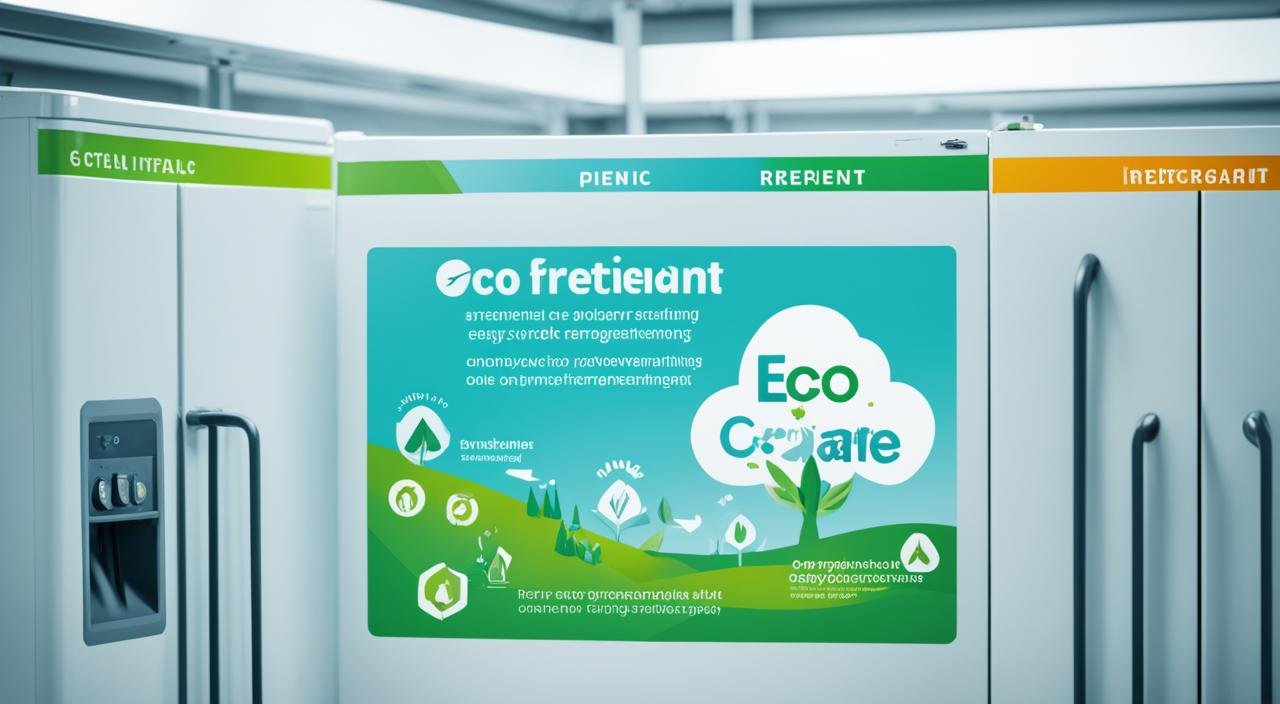Welcome to our quick guide on non renewable resource examples. Non-renewable resources are natural resources that are finite and take millions of years to form. They cannot be replenished at the same rate at which they are consumed. The main examples of non-renewable resources are fossil fuels such as oil, coal, and natural gas. These resources are widely used for energy production but come with environmental consequences.
Key Takeaways:
- Non-renewable resources are finite and cannot be replenished at the same rate as consumption.
- Fossil fuels like oil, coal, and natural gas are prominent examples of non-renewable resources.
- Non-renewable resources are widely used for energy production but come with environmental consequences.
Understanding the Basics of Non Renewable Resources
Non-renewable resources are a vital component of our global energy consumption. To fully grasp their importance and environmental implications, it’s essential to understand the basics of these resources.
Non-renewable resources are formed over millions of years from organic materials that have decomposed. These resources exist in the form of gas, liquid, or solids, such as fossil fuels and minerals. They are extracted from the Earth and processed into forms that can be used for various purposes.
Non-renewable resources serve as the primary source of power worldwide. They fuel our industries, transportation systems, and provide the energy needed for daily life. However, their finite nature and environmental impact have become subjects of growing concern.
The Environmental Impact of Non Renewable Energy Sources
The use of non-renewable energy sources has a profound impact on the environment. The combustion of fossil fuels, which are a primary example of non-renewable resources, releases greenhouse gases into the atmosphere, contributing significantly to climate change. This environmental impact is a result of the release of carbon dioxide (CO2) and other greenhouse gases during the burning of fossil fuels, such as oil, coal, and natural gas.
Contribution to Greenhouse Gas Emissions
The burning of non-renewable energy sources, particularly fossil fuels, is a major contributor to greenhouse gas emissions. These emissions trap heat in the atmosphere, leading to the greenhouse effect and exacerbating global warming. The increased concentration of greenhouse gases, such as CO2, in the atmosphere is a significant cause of climate change. This has far-reaching consequences for the environment, including rising sea levels, extreme weather events, and disruptions to ecosystems.
Ecological Disruption Through Extraction
The extraction of non-renewable resources can result in significant ecological disruption. Activities such as mining for coal or drilling for oil can destroy habitats, disrupt ecosystems, and lead to the loss of biodiversity. Extraction processes often involve the clearing of land, the disturbance of natural habitats, and the contamination of soil and water sources. These activities can have long-lasting ecological consequences and diminish the resilience of ecosystems to recover from damage.
Constraints on Sustainable Development
Relying heavily on non-renewable resources poses constraints on sustainable development. As these resources are finite, their depletion leads to an increasing scarcity, creating challenges for future generations. The limited availability of non-renewable energy sources hinders the transition to more sustainable and renewable alternatives. The development of renewable energy technologies and the adoption of sustainable practices are crucial to mitigate the environmental impact and ensure a more sustainable future.
| Environmental Impact | Non Renewable Energy Sources |
|---|---|
| Contributes to greenhouse gas emissions | Oil, coal, natural gas |
| Disrupts ecosystems and habitats | Extraction activities such as mining and drilling |
| Constraints on sustainable development | Depletion of finite resources |
Types of Fossil Fuels: Non Renewable Resource Examples
Fossil fuels are a major category of non-renewable resources. They have been the dominant sources of energy for various sectors, but their impact on the environment raises concerns. The three primary types of fossil fuels are:
- Oil: Extracted from underground reservoirs, oil is a versatile fossil fuel used for transportation, heating, and electricity generation.
- Coal: Formed from the remains of plants and trees, coal is primarily used for power generation and industrial processes.
- Natural Gas: Composed mainly of methane, natural gas is used for heating, cooking, electricity generation, and as a feedstock for various industries.
Each type of fossil fuel possesses unique characteristics and methods of extraction. While they have played a crucial role in meeting energy demands, the use of fossil fuels has contributed to environmental issues such as air pollution and climate change.
Oil as a Pivotal Non Renewable Resource
Oil is a crucial non-renewable resource that plays a pivotal role in various aspects of our lives. From powering transportation to fueling manufacturing processes and energy production, oil is an essential commodity on a global scale.
Extraction and Refining Processes
The extraction of oil involves drilling wells deep into the earth’s surface to access underground reservoirs where the oil is trapped. Various techniques, such as drilling rigs and offshore platforms, are used to extract oil from both land and ocean sources.
Once extracted, the crude oil undergoes a refining process to transform it into different products. Refineries separate the crude oil into fractions based on their boiling points, allowing the production of gasoline, diesel, jet fuel, lubricants, and other petroleum-based products.
Global Dependency and Depletion Concerns
The world is heavily dependent on oil due to its versatility and energy density. With its wide range of uses, including transportation, heating, and electricity generation, oil has become a fundamental driver of economic growth and development.
However, there are growing concerns about the depletion of oil reserves and its long-term sustainability. As oil is a non-renewable resource, its extraction and consumption surpass the natural replenishment rate. This imbalance raises worries about future shortages and the need for alternative energy sources.
To ensure a sustainable energy future, it is essential to explore and invest in renewable energy alternatives that can alleviate our global dependency on oil and reduce the environmental impact associated with its extraction and use.
| Uses of Oil | Oil Extraction | Depletion Concerns |
|---|---|---|
| Transportation | Drilling wells | Finite nature of oil reserves |
| Manufacturing | Offshore platforms | Imbalance between extraction and replenishment |
| Energy production | Refining process | Need for alternative energy sources |
Note: The table above highlights the uses of oil, the extraction methods involved, and the concerns related to its depletion.
Natural Gas: A Clean but Finite Energy Source
Natural gas is a clean-burning non-renewable resource that plays a vital role in various aspects of our daily lives. It is widely used for heating both residential and commercial buildings, cooking delicious meals in our kitchens, generating electricity to power our homes and industries, and serving as a feedstock for numerous manufacturing processes. With its low carbon emissions compared to other fossil fuels, natural gas is considered a cleaner energy source.
However, despite its advantages, natural gas still contributes to greenhouse gas emissions, particularly carbon dioxide and methane. Though cleaner than coal or oil, these emissions have a significant environmental impact and contribute to climate change.
The finite nature of natural gas reserves is another crucial aspect to consider. As a non-renewable resource, natural gas reserves are not infinite and will eventually deplete. This poses challenges for long-term sustainability and calls for a transition to renewable energy sources.
Uses of Natural Gas in Daily Life
The versatility of natural gas makes it an essential resource in our daily lives. Here are some common uses of natural gas:
- Heating: Natural gas is extensively used for heating purposes in residential, commercial, and industrial settings. It provides efficient and reliable heat for space heating, water heating, and various industrial processes.
- Cooking: Natural gas is the preferred fuel for stoves, ovens, and other cooking appliances. It allows for precise temperature control, even heat distribution, and quick cooking times.
- Electricity Generation: Natural gas power plants are responsible for a significant portion of electricity production globally. The combustion of natural gas drives turbines to generate electricity efficiently.
- Industrial Applications: Many industries rely on natural gas as a feedstock for manufacturing processes, such as producing plastics, fertilizers, chemicals, and refining petroleum products.
These are just a few examples of how natural gas is integrated into our daily lives, highlighting its importance as an energy source.
The Challenge of Sustainability and Transition
The sustainability of natural gas as an energy source faces several challenges. The finite nature of natural gas reserves poses concerns about future availability and energy security. As reserves are depleted, it becomes necessary to find alternative sources of energy to meet our growing energy demands.
Furthermore, the environmental impact of natural gas extraction, transportation, and combustion cannot be overlooked. While natural gas emits lower levels of carbon dioxide compared to coal and oil, it still contributes to greenhouse gas emissions. Additionally, the extraction process, such as hydraulic fracturing or “fracking,” can have detrimental effects on the environment, including water pollution and habitat disruption.
As we strive for a sustainable future, the transition to renewable energy sources becomes imperative. Developing and implementing technologies that harness renewable energy, such as solar power, wind energy, and geothermal energy, will help reduce our dependence on non-renewable resources like natural gas.
By embracing sustainable practices and investing in renewable energy alternatives, we can mitigate the environmental impact of natural gas and ensure a cleaner and more sustainable energy future.
Understanding Coal and Its Role in Power Generation
Coal is a non-renewable resource that has played a crucial role in power generation and industrial processes for centuries. It has been a primary source of energy due to its abundance and affordability. However, the use of coal comes with significant environmental consequences.
The Varieties of Coal and Their Uses
There are four main types of coal: anthracite, bituminous, subbituminous, and lignite. Each type has different carbon content, energy output, and uses.
Anthracite coal is the highest grade, with the highest carbon content and energy output. It is primarily used for space heating and industrial processes.
Bituminous coal is the most abundant type and is used for electricity generation, as well as in the production of steel and cement.
Subbituminous coal has a lower carbon content and is commonly used for electricity generation and industrial applications.
Lignite coal has the lowest carbon content and is mainly used for electricity generation in power plants.
Coal Mining Techniques and Environmental Effects
Coal mining involves various techniques, including surface mining and underground mining.
Surface mining methods, such as strip mining and mountaintop removal, are used to extract coal deposits close to the surface. These methods involve removing layers of soil and rock to access the coal seam. However, surface mining can result in significant land degradation and habitat loss.
Underground mining involves tunneling into the earth to reach coal seams deep beneath the surface. This method poses risks to miners’ safety and can also lead to subsidence and groundwater contamination.
Coal mining has severe environmental effects. It contributes to water pollution through the discharge of mine wastewater and the leaching of harmful chemicals from coal waste. Additionally, the combustion of coal releases greenhouse gases, such as carbon dioxide and methane, causing air pollution and contributing to climate change.
As the global energy landscape shifts towards cleaner and more sustainable alternatives, the impact of coal on the environment raises concerns. Transitioning to renewable energy sources and adopting cleaner coal technologies are essential steps towards reducing the environmental effects associated with coal use.
Uranium: The Backbone of Nuclear Energy
Uranium plays a vital role as a non-renewable resource in the field of nuclear energy. It is primarily used as a fuel in nuclear power plants to generate electricity. The use of uranium in nuclear reactors produces a significant amount of energy, making it a valuable resource for meeting electricity demands.
The extraction process of uranium involves mining and refining. Uranium deposits are found in various parts of the world and are extracted through mining operations. Once extracted, the uranium ore undergoes a refining process to obtain the necessary concentration for use in reactors.
Nuclear energy has both advantages and disadvantages in terms of emissions and waste management. It is a low-carbon energy source, producing significantly fewer greenhouse gas emissions compared to fossil fuels. However, the disposal of radioactive waste from nuclear reactors is a concern that requires careful management.
Despite its benefits, the reliance on uranium raises concerns about its long-term availability. As uranium is a finite resource, there is a need to explore alternative sources of energy and develop sustainable practices for the use of nuclear energy.
Uranium is a valuable resource for the production of nuclear energy. Its use in nuclear power plants contributes to the generation of electricity while minimizing carbon emissions. However, the limited availability of uranium highlights the importance of considering renewable energy sources and implementing strategies for sustainable energy production.
Exploring Non Renewable Materials Beyond Energy
Non-renewable resources encompass more than just energy sources. They also include metals, minerals, and other geological materials that play a significant role in various industries. These materials have immense industrial and economic significance, as they are utilized in manufacturing, construction, and other sectors.
Metals, Minerals, and Their Industrial Significance
Metals and minerals extracted from non-renewable resources are crucial for numerous industrial processes and applications. Metals such as iron, copper, and aluminum are used in manufacturing machinery, buildings, and transportation equipment. Minerals like gypsum, limestone, and quartz are utilized in construction, ceramics, and glass production. These materials form the foundation of our modern infrastructure and contribute to economic growth and development.
The Finite Nature of Geological Resources
Non-renewable materials are finite geological resources with limited availability. Unlike renewable resources, non-renewable materials take millions of years to form and cannot be replenished at the same rate they are consumed. As a result, their extraction and consumption must be carefully managed to ensure sustainable use and mitigate the risk of resource depletion.
The finite nature of these resources poses challenges for industries heavily reliant on them. It requires developing strategies for efficient use, conservation, and recycling to extend their availability and reduce environmental impact. Balancing the industrial significance of non-renewable materials with the need for resource preservation is vital for ensuring long-term sustainability.
Overall, non-renewable materials go beyond energy sources, encompassing metals, minerals, and other geological resources. Their industrial significance cannot be understated, but their finite nature calls for responsible extraction and consumption practices to ensure resource availability and sustainable development.
An Overview of Global Non Renewable Resources List
A comprehensive list of global non-renewable resources includes fossil fuels (oil, coal, natural gas), uranium, metals (such as gold, silver, copper), minerals (such as iron ore, bauxite), and other geological materials. These resources are distributed unevenly around the world and play crucial roles in global economies.
Non-renewable resources are natural resources that cannot be replenished at the same rate at which they are consumed. As a result, they are finite and take millions of years to form. The extraction and use of these resources have significant environmental and socioeconomic implications.
Fossil fuels, including oil, coal, and natural gas, are among the most widely known non-renewable resources. They are essential for meeting energy demands globally but come with environmental consequences such as greenhouse gas emissions and habitat destruction.
In addition to fossil fuels, uranium is another non-renewable resource that plays a vital role in energy production. It is primarily used as fuel in nuclear power plants, contributing to electricity generation.
Non-renewable resources also encompass metals and minerals that are important for various industries. Metals like gold, silver, and copper have extensive applications in electronics, construction, and jewelry. Meanwhile, minerals such as iron ore and bauxite are key components in the production of steel and aluminum.
It is important to note that non-renewable resources are not evenly distributed around the globe. Some regions have abundant reserves, while others are resource-poor. This has significant implications for global trade, geopolitics, and economic development.
Considering the finite nature of non-renewable resources, it is crucial to adopt sustainable practices and explore alternative energy sources. This includes transitioning to renewable energy and implementing strategies to conserve non-renewable resources for future generations.
Conclusion
As the environmental impact of non-renewable resources becomes more apparent, there is a growing need to shift towards renewable alternatives. It is imperative that we invest in renewable energy technologies, implement policy reforms, and increase public awareness to facilitate this transition. By embracing renewable alternatives, we can mitigate the harm caused by non-renewable resources and pave the way for a more sustainable future.
Moving Forward: The Shift to Renewable Alternatives
To facilitate the shift to renewable alternatives, we need to prioritize the development and adoption of renewable energy technologies. This includes investing in solar, wind, hydroelectric, and geothermal energy sources, as well as advancing energy storage solutions. By diversifying our energy mix, we can reduce our reliance on non-renewable resources and significantly decrease greenhouse gas emissions.
Strategies for Conserving Non Renewable Resources
In addition to transitioning to renewable alternatives, it is essential to implement strategies for conserving non-renewable resources. Energy efficiency measures, such as improving insulation, upgrading appliances, and optimizing transportation systems, can significantly reduce energy consumption and extend the lifespan of non-renewable resources. Furthermore, implementing recycling programs for materials like metals, plastics, and paper can help minimize waste and conserve valuable resources.
By embracing the shift to renewable alternatives and implementing strategies for conserving non-renewable resources, we can create a more sustainable and environmentally conscious future. It is crucial for individuals, businesses, and policymakers to collaborate and take action, as the need for change has never been more pressing. Together, we can chart a path towards a greener and more resilient world for current and future generations.
FAQ
What are non-renewable resources?
Non-renewable resources are natural resources that are finite and take millions of years to form. They cannot be replenished at the same rate at which they are consumed.
What are some examples of non-renewable resources?
The main examples of non-renewable resources are fossil fuels such as oil, coal, and natural gas. Other examples include uranium, metals, minerals, and other geological materials.
Why are fossil fuels considered non-renewable resources?
Fossil fuels are formed from organic materials that have decomposed over millions of years. They are finite in nature and take a significant amount of time to form, making them non-renewable resources.
What are the environmental impacts of non-renewable energy sources?
The combustion of fossil fuels releases greenhouse gases, contributing to climate change. Extraction activities can also disrupt ecosystems and lead to habitat destruction. Additionally, relying heavily on non-renewable resources hinders sustainable development and limits resources for future generations.
What are the different types of fossil fuels?
The three primary types of fossil fuels are oil, coal, and natural gas. Each type has unique characteristics and methods of extraction.
How is oil extracted and refined?
Oil is extracted through drilling wells, and it is then refined into different products such as gasoline, diesel, and jet fuel.
Why is there concern about the global dependency on oil?
The world’s dependency on oil raises concerns about long-term sustainability and the depletion of reserves. It emphasizes the need for alternative energy sources.
What are the uses of natural gas in daily life?
Natural gas is widely used for heating, cooking, electricity generation, and as a feedstock for various industries.
What challenges does natural gas face in terms of sustainability?
While natural gas is considered cleaner than other fossil fuels, its finite nature poses challenges for long-term sustainability, necessitating a transition to renewable energy sources.
What are the environmental effects of coal mining?
Coal mining techniques can have severe environmental impacts, including land degradation, water pollution, and air pollution from emissions.
How is uranium used in nuclear energy?
Uranium is primarily used as a fuel in nuclear power plants to generate electricity. It undergoes a refining process before being used in reactors.
What is the industrial significance of non-renewable metals and minerals?
Metals and minerals are used in manufacturing, construction, and various industries. They play a crucial role in global economies.
What is the finite nature of geological resources?
Non-renewable geological resources, such as metals and minerals, are finite in nature. Their availability is limited, and sustainable extraction practices are necessary.
What are some strategies for conserving non-renewable resources?
Strategies for conserving non-renewable resources include energy efficiency measures and recycling. These practices help extend the availability of resources and reduce environmental harm.





